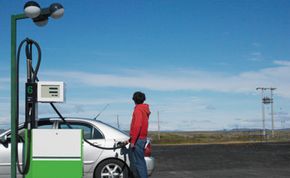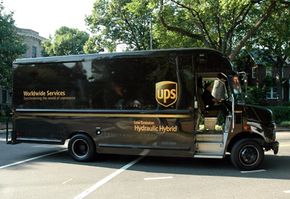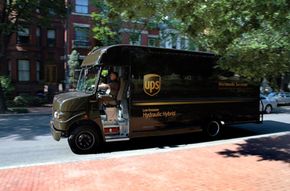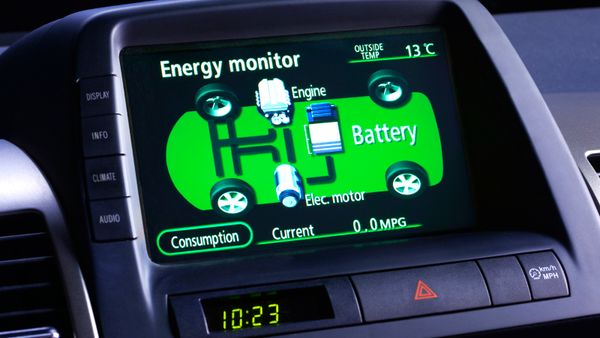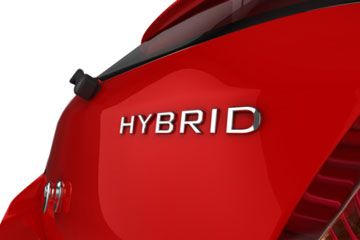With the 2005 release of series hydraulic hybrid UPS vehicles, the EPA
signaled its willingness to back the technology. But why tie it to such a big, heavy vehicle? Why not put the system in a lightweight car that gets good mileage?
The answer lies in traffic (which is odd, because usually only frustration lies in traffic). Remember, the hydraulic hybrid system gets its power through regenerative braking. That means that, flying down the highway, a hydraulic hybrid isn't much different than a regular car. But in traffic, particularly stop and go traffic, a series hydraulic hybrid can shut its engine off and use hydraulic power alone. Stopping and starting is the key to saving fuel with a hydraulic hybrid.
UPS trucks go from one stop to the next, often in urban traffic, and are rarely used on the highway. They're also often left on as drivers make pickups and deliveries. In conventional UPS trucks, this creates pollution and adds to the company's fuel costs. However, in the series hydraulic hybrid trucks, the engine can shut off while the truck is on.
Also, by cutting the fuel used and pollution emitted by one large truck, there's a bigger impact overall than cutting the fuel and pollution of a smaller vehicle. Cleaning up the larger vehicle has a bigger payoff.
What is the payoff exactly? The increases in fuel economy equal huge savings, financially and environmentally. Because the energy in a hydraulic hybrid doesn't pass through an electric motor, it recovers more energy lost during braking. A gas/electric hybrid recovers 30 percent of braking energy, while a hydraulic hybrid can recover 70 percent, contributing to better efficiency [source: NextEnergy]. The EPA estimates that CO2 emissions from hydraulic hybrid UPS trucks are 40 percent lower than conventional UPS trucks, and a fleet of trucks could save 1,000 gallons of fuel a year. The EPA also estimates that with less maintenance than a gas/electric hybrid and less fuel then a conventional truck, UPS could save up to $50,000 over the lifespan of each hydraulic hybrid truck [source: EPA].
Another payoff is the efficiency of the hydraulic components themselves. Because the components are lightweight and use simple mechanics, they're easy to build, maintain and repair. In contrast, gas/electric hybrids use heavy batteries that may become obsolete and, as we've learned, are sometimes toxic and difficult to dispose of.
However, you won't see hydraulic hybrids in your local car showroom any time soon. No major automaker has plans to build hydraulic hybrid passenger cars. There's a surprising reason for that: your car radio. Modern cars have a number of electrical systems to power things like the radio or air conditioner. Those systems are powered by a conventional car's battery which gets charged by the car's gasoline engine. If the engine shuts off and the electronics stay on, the battery gets drained. That's why your car dies after you leave your headlights on.
In gas/electric hybrids, the extra batteries can keep the electrical components running while the engine is shut off at a stop. Hydraulic hybrids, however, lack the extra batteries needed to power electrical systems when the engine turns off. While that's not a big deal for parallel hydraulic hybrids, since their engines don't shut off when the vehicle stops, it is a big deal for series hydraulic hybrids. While they offer the best fuel efficiency, they can't power a radio or air conditioner when the vehicle stops, making them a tough sell for most American consumers.
